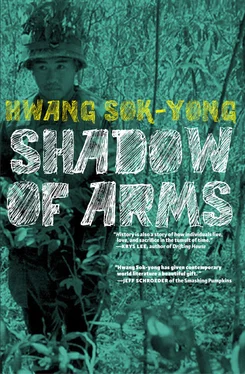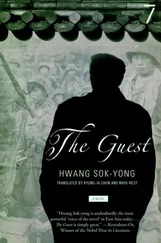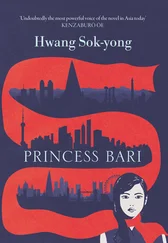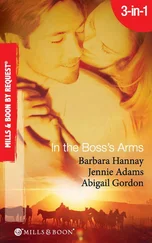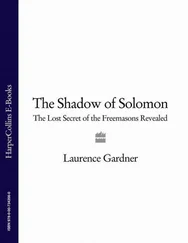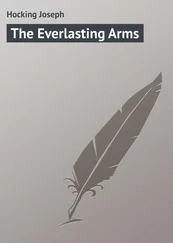Testimony from Investigation
Lt. Gen. Frank A. Barker (Division Commander): To execute Gen. Westmoreland’s strategy of search-and-destroy operations, each brigade headquarters organized Barker commando teams of one company from each of their three battalions. Capt. Medina’s Company C was one of the special commando teams under my command, and was posted at the landing strip at Doti last January 26. The important task assigned to these commandos was to pressure the Pinkville sector several miles northeast of Quang Ngai city. Yes, “Pinkville” is our troops’ name for that place. Was it because of a strong political presence of the Reds? No, it was because on the strategic maps, the region northeast of Quang Ngai was a conspicuous reddish color. Yes, that’s right, the color meant it was a densely populated area.
Capt. Medina: We were told the area had been a VC den for the past twenty-five years. The villagers in the area had been given several orders to evacuate, and it was designated a free-fire zone. But I ordered my men not to fire on the villagers if they came into the open in the middle of an engagement. But that day when my platoons had retreated about four or five hundred meters and our radio operator was hit by enemy fire, I ordered them to go back up over a four-foot high bank.
Seymour M. Hersey: We’d been bivouacking in the field for about three weeks and were almost collapsing from exhaustion. We began wondering if it wasn’t our captain’s fault that we always got dirty, dangerous missions. Medina was always foaming at the mouth, bragging about our company being a model fighting machine. Somebody openly griped that Medina cared more about getting a promotion for himself than he did about the safety of his troops. Then again, Medina loved to blow his own horn in front of Lt. Gen. Barker, saying how the VC were terrified of Company C. Our morale was sunk in the mud. We hadn’t gotten a single fresh reinforcement and forgot what it was like to sleep in a dry spot. We got cold toward the Vietnamese. If little children tagged after us begging for gum or money we literally kicked them away. We got up at dawn, ate cold C-rations, packed up and marched till noon, and ate the same C-rations for lunch. Then we kept on trudging all day until stopping to eat C-rations in the evening. The hot sun and the thirst nearly drove us out of our minds. Medina interrogated lots of suspected VC, saying he’d pry some information out of them. Once his men brought an old man over to Medina while he was lying on his stomach on a rock. With a sudden scream like he was spooking a herd of cattle, Medina grabbed the old man by his neck and started rolling. The old man was so terrified that he shit his pants. It was around February 15 that we started getting cruel.
Greszek: When we arrived at the entrance of a hamlet, one of the men, Carter, offered a cigarette to an old peasant. As the old man was about to put the smoke in his mouth, Carter suddenly started beating him on the head with his gunstock. The old man’s chinbone was smashed and his ribs broken, but nobody interfered. A few hours later we fired some shots at a shadow running across the field. Two of our men went closer, emptying the whole clips of their M16s before they discovered it was just an old woman on her way home to the village with a bunch of vegetables she’d picked. Lt. Calley radioed in a report that we’d killed a VC. A few minutes later two suspected VC guerrillas were brought before Calley. I had Vietnamese language training in Hawaii so I was going to interrogate the prisoners. Before I started the questioning, another platoon member dragged an old man over to us. I found the old man was carrying an ID card issued by the Vietnamese government, so I said to Calley: “Sir, I don’t think this one is a Viet Cong.” But Calley started waving his M16 around and ordered the soldier to take care of the old man. “Why are you killing this old man?” I asked Calley, but he only said that all Vietnamese are the same trash. That was when Carter came over.
Carter: All I did was threaten to push the old man into the well, prodding him with my gun. The old man planted his feet wide apart and wouldn’t budge. That was when Calley fired.
Boyce: Calley radioed to Medina to report that he’d caught an old VC trying to jump into a well. Medina ordered us to make a complete search of the well, saying it might be an entrance to a VC tunnel network. But by then the well was all bloody and none of us would go in. Calley called back and said there was no underground passage in the well. February 25, that was our company’s worst day. We lost six and twelve were wounded after walking into an enemy minefield north of Pinkville. Most of the casualties were from Calley’s first and third platoons. Capt. Medina was awarded a Silver Star for rescuing the wounded. But the minefield was one clearly marked on the maps we had. The losses could’ve been avoided. Sgt. Cohen was the one who had hurried us into that field, he was responsible.
Hersey: It was around then that Company C seized a woman with a baby on her back and raped and killed her. One of the soldiers took snapshots of the whole thing with his Instamatic.
Gary Apollo: On March 14, two days before the My Lai operation, our company suffered casualties again. We hit some booby traps while passing along a thickly wooded trail. Sgt. Cox detected a bomb, but it went off while he was disarming it, killing him and putting out the eyes of a nearby soldier. After evacuating them by helicopter, we were so enraged that we torched all the houses in a village on the return route to our base. Still angry, we went into a village on the edge of a secure zone and killed and robbed a woman. The villagers reported that incident to the Vietnamese police. Medina received a protest from the police. He was upset that what happened had been uncovered, but he didn’t punish any of his men for what they did.
Lt. Gen. Barker: My only concern was to sweep out the enemy — the Viet Cong were known to have about 280 veteran troops in that area. I relied on Capt. Medina. He and I did a helicopter over flight of the whole Pinkville region and then set up the operations plan.
Calley: Around 0700, the women and children of My Lai hamlet would go to the markets in Quang Ngai city or in Son Dinh to sell things, so, taking advantage of that time, we were given a search-and-destroy mission, with orders to burn My Lai hamlet, destroy the bunkers and tunnels, and slaughter the cattle.
Medina: I never gave an order to kill women or children.
Nguyen Phu: As a staff sergeant dispatched to Company C as an interpreter, I didn’t believe what I was hearing. Even when I heard the soldiers saying they were going to wipe out a village the next day and would take revenge by killing every single Viet Cong they saw, I thought those American soldiers were just boasting.
Medina: Maybe Lt. Calley took the operations orders as a license to go into My Lai and have his men take their revenge.
Brooks: At dawn on March 16, Lt. Calley’s 1st platoon and the 2nd platoon under my command moved into Pinkville by helicopter. Calley’s was the advance force. After gunships bombarded the My Lai area with hundreds of rockets and bullets, Calley’s platoon jumped down into the rice fields. The rice shoots were billowing in the breeze, almost ready for harvesting. My Lai was a hamlet with suspected VC sympathizers, with a population of about seven hundred.
Lt. Gen. Barker: At the time I was in a helicopter about 1000 feet overhead, supervising the sweeps.
Brooks: As our platoon approached the hamlet, we saw several men, apparently VC, running away to avoid the shower of fire from the gunships. We also started firing from the ground. A woman and a child fell.
Sledge: We in Calley’s platoon entered My Lai from the south, moving toward the center of the hamlet. The villagers didn’t even try to flee; they just stood there watching us running. They seemed to know that if they ran away we would fire at them. There was no fear on their faces; they just blankly watched us. It was a little after 0800. Some of them were about to have breakfast. We began rounding up the villagers.
Читать дальше
